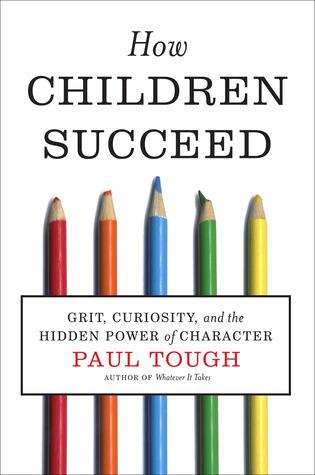 We’re reading How Children Succeed by Paul Tough. You’re welcome to join us whether or not you are participating in other activities related to the Back to School Reading Challenge.
We’re reading How Children Succeed by Paul Tough. You’re welcome to join us whether or not you are participating in other activities related to the Back to School Reading Challenge.
We’ve had two previous discussion posts:
How Children Succeed by Paul Tough — A Back to School Read Along
How Children Succeed by Paul Tough — A Back to School Read Along, September 4
 I finished How Children Succeed, reading the last three sections:
I finished How Children Succeed, reading the last three sections:
- How to Think
- How to Succeed
- A Better Path
The How to Think section is mostly about chess, particularly the Intermediate School 318 in Brooklyn and its remarkable ability to make chess players of disadvantaged students that compete successfully against students in more privileged schools.
This section begins to tease out the differences between best practices with infants and older children:
Researchers, including Michael Meaney and Clancy Blair, have demonstrated that for infants to develop qualities like perseverance and focus, they need a high level of warmth and nurturance from their caregivers. What [chess teacher Elizabeth] Spiegel’s success suggests, though, is that when children reach early adolescence, what motivates them most effectively isn’t licking and grooming-style care but a very different kind of attention. Perhaps what pushes middle-school students to concentrate and practice as maniacally as Spiegel’s chess players do is the unexpected experience of someone taking them seriously, believing in their abilities, and challenging them to improve themselves. p. 121
I learned something unexpected in this chapter — the reason that my brother was a better chess play than me even though he was a year younger. I always tested out a potential move in my head with rosy optimism, how it could lead to check. Good players, look, instead, at what could go terribly wrong. When I made the first move of my grand scheme, I was always startled when his bishop came out of nowhere to nab my queen.
Do you play chess? Does that effect how you understood this section?
The How to Succeed section, not too surprisingly, covers the path from high school into college. I was surprised to learn that the statistics show that the problem with college for disadvantaged students isn’t access but completion. The US is dropping behind other countries in the percentage of people who graduate from college — “Not long ago, the United States led the world in producing college graduates; now it leads the world in producing college dropouts.” (p. 150) And, this at a time when college diplomas in the marketplace are worth more than ever.
Standardized tests like the SAT and ACT, it turns out, aren’t as predictive of success in college as we were led to believe. Instead, it’s the high school GPA that is most predictive of success. And, it’s GPA, not test scores, that correlate with the character traits that this book has been talking about, like grit and self-control.
Much of this section covered a program in Chicago called OneGoal that helps under-performing high school freshmen become students destined to get into and graduate from college. It works and, at $1400 per student each year, it’s quite a bargain compared to the results we get from other educational ventures.
Did anything surprise you in the How to Succeed chapter about high school students making their way in college?
I enjoyed that the last section, a Better Path, began with a part that reads more like memoir so we learn Paul Tough’s educational experiences and what he’s thinking about as a parent. But, of course, the vision broadens to what all the studies and programs elucidated in How Children Succeed have to say about how education can better serve all kids.
He also talks about the politics of the situation. Liberals will be startled to learn “conservatives are correct on one very important point: character matters.” (p. 195) But the science doesn’t support the conservative idea that we’re off the hook from doing anything about it, because, it turns out;
We now know a great deal about what kind of interventions will help children develop those strengths and skills, starting at birth and going all the way through college. Parents are an excellent vehicle for those interventions, but they are not the only vehicle. Transformative help also comes regularly from social workers, teachers, clergy members, pediatricians, and neighbors. We can argue about whether those interventions should be provided by the government or nonprofit organizations or religious institutions or a combination of the three. But what we can’t argue anymore is that there’s nothing we can do. p. 196
Are you reading How Children Succeed? What thoughts are you having so far? How does what your reading confirm or contrast with your experiences?
If you write a post about How Children Succeed by Paul Tough, link to it below. Or, we can discuss it in the comments.
